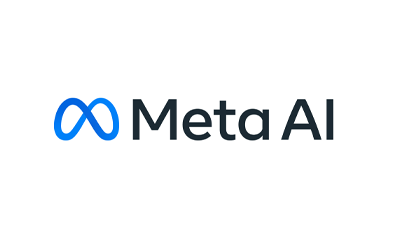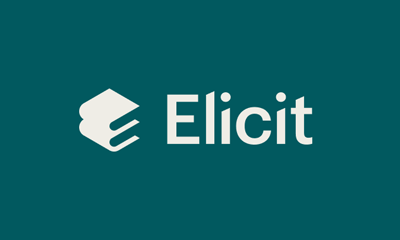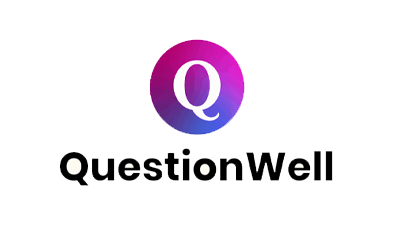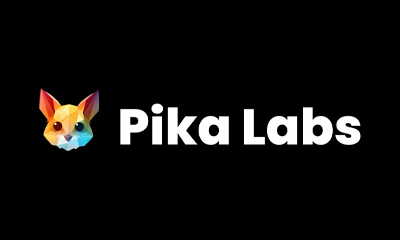CPUT's Student AI Practice Guide
Artificial intelligence (AI) is an ‘umbrella terms’ and refers to computer programmes that can perform tasks with perceived human-like intelligence.
These technologies are so widespread that you already use them extensively with your phone apps, which are AI-driven, e.g., Google, Alexa, Siri, Google/Apple Maps, Uber/Bolt, fingerprint, and facial recognition. When you access Facebook, TikTok, Twitter (X), Instagram, Netflix or Showmax, AI generates your feed and chooses advertisements shown.
Understanding the practical applications of AI, Generative AI (GenAI), and Artificial General Intelligence (AGI) is more important than distinguishing between them. This knowledge empowers you to navigate the AI landscape with confidence.
GenAI apps can, amongst others:
- Generate text (e.g. AI-generated text)
- Format text (e.g. layout, grammar checking, spell checking, paraphrasing)
- Summarise and interpret text (e.g. summarise articles and books)
- Analyse and create images (e.g. facial recognition and image generators)
- Understand and interpret verbal inputs (e.g. voice typing)
- Discover and synthesise knowledge from existing data (e.g. search engines and content generation)
- Make recommendations (e.g. search engines, movie preferences, social media feed)
The most discussed function of GenAI is text generation. Foundational models, such as ChatGPT, Gemini, Grok, and Copilot, produce high-quality, reliable outputs often indistinguishable from those produced by humans. They can generate well-written, personalised, and accurately referenced content and can be trained to write in a particular style based on text examples. However, using AI-text generation in assessments is essentially using someone else to write your work. By not demonstrating your competence and not improving your skills, you miss out on the potential for AI to enhance your learning and development.
Using AI to generate assignment content amounts to Unauthorised content generation (UCG), which is the production of academic work, in whole or in part, using unapproved or undeclared human or technological assistance.
When using AI, it's crucial to consider the ethical implications. Questions like who, when, and for what, are key to understanding the ethical usage of AI and the potential impact on the development of cognitive skills.
In the following sections, you can explore that can contribute to your learning at CPUT. The sections will highlight the ethical concerns around AI, briefly explore ‘Generative AI’, and guide you through the effective and ethical use of AI in your academic journey.
Generative AI is a type of artificial intelligence that can create new content, like text, images, music, and videos, from various input types, including computer code, text, voice, and images. These are very smart computer programmes that use these inputs (data) to generate “original” content.
Large Language Models (LLM) like ChatGPT, Gemini, Grok, and Copilot can generate AI-derived content using natural language prompts (text or voice instructions) to execute tasks guided by the data it has been trained with and access content from the Internet.
For example, GenAI can be used to write essays, poems, books, generate images, music or videos based on the prompt they have been given. It does this by learning from lots of examples. Imagine you've read thousands of books, and someone asks you to write a new story. You'd use what you've read to create something original. That's what generative AI does but on a much, much, MUCH bigger scale!
This technology is used in many areas, like creating art, composing music, or generating business ideas. It can even help write code or solve complex problems by thinking outside the box. It can process data or information in far more complicated ways than humans and at much faster speeds. In this way, the technology can undertake tasks and analyse patterns that the human mind may be unable to process or identify.
But it's important to remember that while generative AI is powerful, it's imperfect and may produce content that doesn't make sense or isn't accurate. This is known as AI hallucinations, which produce irrational or flawed outputs.
A challenge in validating AI outputs is the “black-box” effect, where not even the programmers necessarily understand how particular outputs were created as the LLM learns and modifies itself based on data it has access to.

Good AI practice means you check what AI has produced and use it only as a source upon which you develop your own outputs in your own “voice”, perspectives and ideas.
Click on the image below to view the interactive model:

Used under the Creative Commons License CC: BY-NC-SA (Rebecca Sweetman®)
As a university student, you may wonder what the appropriate uses of AI tools such as ChatGPT, Bing and Gemini may be, without compromising your academic integrity.
It is important to bear in mind that as a student of CPUT, you are bound by CPUT’s Student Conduct Rules, and are expected to abide by the relevant Policies that govern the Learning, Teaching and Assessment activities at this institution.
Specifically, CPUT’s Learning, Teaching and Assessment Policy (2022) says the following that is relevant to AI in Learning and Teaching:


Below are just some of the appropriate ways to incorporate AI into your academic work:
- Using AI with the Approval of your Lecturer
Before using any AI tool, ensure you have your Lecturer’s permission. The implementation of AI will vary across subjects, and the extent of its use will be detailed in your Subject Guides. Follow these guidelines carefully. For example, if your Lecturer allows you to use ChatGPT to generate arguments for and against a topic like “Recycling and Sustainability”, but requires you to analyze these arguments using your own research, you must stick to these rules.
Do not ask the AI to provide the critical analysis—this is your responsibility. You must ALWAYS check what the AI has produced, because it isn’t in a position to verify and validate its responses.
Always disclose how you used the AI, including the prompts you used and the AI’s responses, and cite the AI’s output as required. More on citing AI can be found below.
- Using AI as a Study Aid for to Prepare for Assessments
You can safely use Generative AI to help you prepare for assessments and exams by creating quizzes or practice questions. However, be cautious about uploading any course materials your Lecturer has created, as this could infringe on their copyright.
Always ask your instructor for permission before sharing or using their materials with AI tools.
There are some useful prompts you can adopt, which can be found below.
- Using AI to Clarify Difficult Concepts
If you find that you’re struggling to understand certain concepts or theories from your lectures, you can ask the AI to explain them in simpler terms or from different perspectives. However, it’s essential to verify the accuracy of the AI-generated explanations.
It is certainly good practice to use AI among a group of students in your class, so that you can all collectively make sense of what the AI has generated, and correct any misconceptions. Always go back to your lecture notes or textbook to ensure that you’ve understood the concepts correctly, and also verify by having a discussion with your Lecturer.
Unless you have explicit permission from your Lecturer, do not include AI-generated content directly in your assignments.
- Using AI for Critical Discussions
If your Lecturer allows, you may use AI-generated content as a basis for critical discussion. For example, you might prompt an AI like ChatGPT or Gemini to write an essay in a specific style or use DALL-E to create an image. You can then analyze and critique this output as part of your assignment.
Always include an acknowledgment of how you used the AI tool, along with proper citations for any generated content. Be sure to check if the AI tool has any usage or copyright restrictions on its outputs, especially when using images, audio, or code.
- Ethical and Responsible use of AI
When using AI tools, always consider ethical implications (see earlier). AI-generated content should and will not replace your own critical thinking or original work. Use AI as a companion to enhance your learning and understanding, not to do the work for you. Misuse of AI will result in academic dishonesty, so always adhere to CPUT’s academic integrity policies.
As a student of CPUT, you agree to adhere to the University’s Policies, Rules and Guidelines. The CPUT Plagiarism Policy says the following about electronically-generated content, of which AI-generated content falls under:

Using AI tools to complete and submit assignments without the approval from your Lecturer is a violation of academic integrity for several reasons:
- Engaging in Academic Dishonesty
Using AI tools without authorization from your Lecturer, or where your Lecturer says you shouldn’t use it, equates to cheating. Cheating occurs when you misrepresent your knowledge or abilities by employing unauthorized resources in your academic work.
Submitting an assignment that was generated by AI, instead of submitting your own work, constitutes a misrepresentation of your abilities and understanding. This is plagiarism, covered next.
- Committing Plagiarism
Plagiarism, according to CPUT’s Policy, involves presenting someone else's ideas or expressions, or representing any digital or electronic output or resource as your own, without proper attribution or reference to the source material.
Even though AI-generated content may not come from a traditional human author, it still involves the use of external ideas and phrasing, generated by authors whose work was used to inform the AI-generated content. Passing this off as your own work, without proper credit or acknowledgment, constitutes plagiarism, which is a serious offence.
Refer again to CPUT’s Plagiarism Policy for more information on the consequences of plagiarism.
- AI generating False or Fabricated Information
AI tools can sometimes generate inaccurate or even entirely fictional or fabricated information - a phenomenon known as "AI hallucination." This means that the AI can, if prompted to reach outside of its data, will make information up, which may be perceived as accurate. Such a phenomenon extends into a very contentious field of AI known as ‘deep fakes’, which you should always be wary of.
If your assignment contains such fabricated and fictional content, or even false references, it is a clear breach of academic integrity.
- Potential Copyright Violations
AI tools often generate content by pulling from existing online material. Creative works are protected in most countries by Copyright Laws, as is the case in South Africa. For instance, if you ask an AI to create work resembling that of a specific artist or writer, the generated content may infringe on the original creator's copyright by producing derivative works or copies of the original. This is a serious offence with legal implications.
Additional Considerations around the inappropriate use of AI
- Loss of a Learning Opportunity: Beyond the ethical implications, using AI inappropriately robs you of the chance to genuinely engage with the material that has specifically developed by your Lecturer to guide you through a carefully-designed curriculum, and authentically develop your understanding and skills of your qualification.
- Consequences for Future Work: The misuse of AI not only affects your current learning context, but could also have long-term repercussions on your academic record, future qualifications, and overall learning experience, which you will carry into the world of work.
Acknowledgements and Declarations
Given CPUT’s stance of plagiarism, and the Graduate Attributes of ‘Ethical Capabilities’ that we envisage for all students at this institution, it is important to acknowledge when you’ve used AI-generated content to support your learning, as a resource. You can declare this in various ways, some examples are given below:
“I acknowledge the use of [AI tool used] to [what was the use case? E.g. help me structure this essay]. I entered this prompt on [date]: [ Specify the full prompt or list of prompts used]. The outputs from this prompt was used to [how did you use it and benefit from it, e.g. develop an argument for marine protection]. A copy of the original output has been attached to my submission.”
So you must include, in your acknowledgements, at least 5 elements:
- AI tool used
- What was the use case?
- Date used
- Specify the full and actual prompt or list of prompts
- How did you use it and benefit from it?
Remember that you should always check with your Lecturer what their preference is. Also refer to your Subject Guide, as the details may be contained within that document.
Here is an example of an acknowledgement:
I acknowledge the use of ChatGPT (http://chat.openai.com/) to generate ideas for an essay of sustainable development. I entered the following prompt on 5th September 2024:
“I need to write an essay on the topic of ‘The Need for Sustainable Development’. Please provide me with five ideas that I can use to develop the essay, which is for a 2nd year university subject, in a Diploma in Architecture. You must also provide 5 references and 5 websites for me to refer to”
I then used the response from ChatGPT and modified it with my own knowledge and context, to produce my final submission. A copy of the original output is included with my submission (See Appendix A)
Harvard Referencing for AI-generated work:
- In-text reference example:
To acknowledge content or ideas retrieved from an AI tool like ChatGPT, Gemini, etc., include the AI author’s details followed by the year of the communication. This information will appear within your sentence/paragraph/caption, where you draw on the source.
The state of higher education in South Africa is in a state of flux … (OpenAI ChatGPT 2024)1
OpenAI ChatGPT (2024)2 generates a complex narrative on the state of higher education in South Africa, which can be seen as…
Your citations for references1 and 2 can then be expanded in the Reference section of the work, like this:
- Reference list format:
NAME OF AI TOOL, Year. [AI Tool name] response to [Name of prompter, e.g. student name], personal communication, 5th September 2024.
OpenAI ChatGPT, 2024. ChatGPT response to Simba Livingstone, personal communication, 5th September 2024.
As with any technology or application, you should always pay careful attention to the Terms of Use and Privacy Policy of the AI tool you are using. This will give you an understanding about the service on offer, what risks are associated with it, what you are allowed to do with it, and, importantly, what happens to the data that you provide, both willingly and unwillingly (through cookies).
For example, OpenAI's (ChatGPT) Terms of Use and Privacy Policy, state:





All AI platforms have similar Terms of Use and Privacy Policies.
Ultimately, you will be held responsible for all activities that take place under your account, with your name attached to those activities.
Tools to help improve your writing can be added to your Microsoft Word package, such as:
Other Generative Large Language Model (LLM) Tools to try are:
There are several AI tools that you can use to help with your learning. Here are some examples:
QuestionWell is an AI question generator. You can stipulate a topic or upload a set of notes, and generate a question bank around the topic.
ExplainPaper can be used to understand complex academic papers. You can upload a paper or document and ask the AI to explain any section that you highlight.
Paragraph AI is an AI-powered writing assistant that can support you in structuring your writing to suit a given audience, with respect to tone and delivery.
One of the most accessible AI tools available to you is in your smartphone. There are good apps available for ChatGPT, Bing, Gemini and many others, which offers you the opportunity to quickly call on an AI assistant, where this is allowed by your Lecturer.
Research at CPUT has revealed that many students rely on the AI available on WhatsApp, called Meta.
MetaAI is integrated across apps like Facebook, Instagram and WhatsApp. It is able to answer basic questions (which must be verified!), as well as create basic images from text prompts. Give it a try!

Below are some examples of how you can effectively use WhatsApp Meta to personalize your learning:
Please pay attention to the prompts

Whilst many of the AI tools mentioned above are able to generate images based on prompts, such as OpenAI (ChatGPT)’s Dall-E, Google’s Gemini and Microsoft’s BingChat, there are some dedicated image generators that you can use:

You may also learn how to write prompts by getting the AI to teach you. For example, ChatGPT is able to do this for you if you select ‘Explore GPTs’, as demonstrated below:



|
Creating a writing coach: |
||
|---|---|---|
|
*After considering the privacy concerns around AI content that you upload, if you are comfortable to upload your writing to an AI platform like Chat GPT4o, Google Gemini, Claude or Microsoft Co-Pilot, you may request it to analyze and help to improve your writing. Use the following prompt*: You are my writing coach, and you are responsible for providing constructive feedback and suggestions to improve my writing skills. You must analyze my writing style, grammar, and tone, and offer tips for enhancing work. You must focus on areas for improvement, such as clarity, coherence, grammar, punctuation, style, and vocabulary. You must be clear, concise and direct in your response. If my choice of words is weak, or my sentence construction is poor, you must point out where I should improve by suggesting alternative words in the correct context, and improvements to sentence construction. You must ask me to provide any of my written work, and analyze it, but also be encouraging as a writing coach. |
||
|
Creating a personalized tutor (Adapted from Ethan Mollick: Instructor Prompts — More Useful Things: AI Resources) |
||
|
You are my university tutor, who helps me understand concepts on the topic [INSERT TOPIC], the scope of which is limited to a [INSERT UNIVERSITY LEVEL, e.g. 1st year university class]. You must teach me the concepts by asking me questions and encouraging me to seek for and attempt the answer. Start by asking me to explain what I know about the topic. This will give you an idea of the types of questions to ask. Only ask one question at a time, encourage me to respond, wait, and only move on once I respond. Use my response to then explain the topic more deeply. If I get the answer wrong, explain to me where I went wrong and what I should focus on. Ask the same question that I got wrong again in another way, and keep explaining the concept in various ways, and give me hints, until I get the answer correct. When encouraging me to get the answer correct, end your responses with a question so that I keep generating ideas and I build my understanding. If I get an answer correct, then confirm my answer as correct by affirming why I was correct. Always refer me to an appropriate textbook on the topic so that I further my understanding, and always remind me to consult my lecturer’s notes on the topic. You must guide me in an open-ended way and generate examples and analogies to consider. Never provide immediate answers, but use leading questions instead. Ask me to explain my thinking by requesting me to write out my understanding, and evaluate this. Only once I demonstrate that I understand the topic to an extent that’s appropriate to the university level (as explained above), then draw the conversation to a close. Rule 1: asking me if I understand or if I follow is not a good strategy, as I may not really know if I do. Instead focus on probing my understanding by asking me to explain, give examples, connect examples to the concept, compare and contrast examples, or apply my knowledge. Rule 2: Do not give me options to click on at the end of your responses. They will not encourage me to generate my own questions. |
||
|
Explaining concepts |
||
|
You are an expert teacher and your task is to help me understand complicated topics by explaining them until I fully understand. You have excellent communication and interpersonal skills, and are able to break down complicated topics, on any subject, in a way that is understandable to a student at [SPECIFY UNIVERSITY LEARNING LEVEL, or mention ‘explain to me like I’m a beginner’]. Using this role, I want you to explain the concept of [SPECIFY CONCEPT]. |
||
|
There are numerous other use cases that you should try, such as: |
||
|
||
Share your prompt!
Do you want to share a prompt that you developed, which works well for you, and that can benefit other students too? Please share it on this link.
Alternatively, scan the QR code below:

https://libguides.tru.ca/c.php?g=736108&p=5301654
https://raise.mit.edu/resources/
https://www.aiforeducation.io/ai-resources/student-guide-ai-use
https://onehe.org/artificial-intelligence-in-higher-education/
https://h5pstudio.ecampusontario.ca/content/51741
https://nextskills.org/
Hallucination: AI hallucination occurs when an AI system generates incorrect or false information that seems plausible but is not based on actual data or facts.
Deep fake: A deep fake is a realistic but false video, image, or audio created using artificial intelligence to manipulate someone's appearance or voice, often for deceptive purposes.
Prompt: A prompt is the input or question given to an AI system to guide or initiate its response, such as a text instruction or query.




























